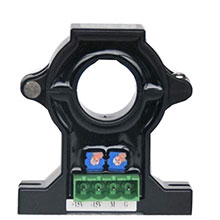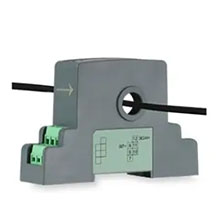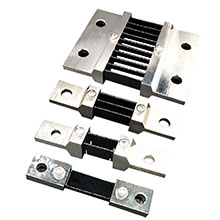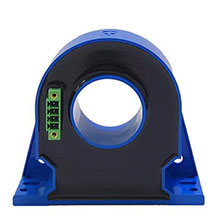What are the Types of Current Sensor?
A current sensor is a detection device that can sense the information of the measured current, and can transform the sensed information into electrical signals that meet certain standards or other required forms of information output according to certain rules to meet the needs of requirements for the transmission, processing, storage, display, recording and control of information.
Current sensors, also known as magnetic sensors, can be used in household appliances, smart grids, electric vehicles, wind power generation, etc. Many magnetic sensors are used in our lives, such as computer hard drives, compasses, household appliances and so on. According to different measurement principles, current sensors can be mainly divided into: shunt resistor, electromagnetic current transformer, electronic current transformer, etc.
Shunt Resistor
Shunt resistor is used to measure DC current. When a DC current passes through a resistor, a voltage is generated across the resistor, and shunt resistor is made according to this principle. Its advantages are high accuracy, fast response speed, and low cost; while the disadvantage is that the measurement circuit is not electrically isolated from the current being measured. Shunt resistor are suitable for low-frequency, small-amplitude current measurements.
Current Transformer
Current transformer works according to the principle of electromagnetic induction. Its function is to convert the primary current with a larger value into a secondary current with a smaller value for protection, measurement and other purposes. A current transformer consists of a closed iron core and windings. Its primary winding has a small number of turns and is connected in series in the line of the current to be measured, so it often has all the current of the line flowing through it; the secondary winding has a relatively large number of turns and is connected in series in the measuring instrument and the protection circuit. When the current transformer is working, its secondary circuit is always closed, so the impedance of the series coil of the measuring instrument and the protection circuit is very small. The working state of the current transformer is close to a short circuit.
Hall Current Sensor
Hall current sensor is made according to the principle of the Hall effect and Ampere's law, that is, a magnetic field proportional to the current is generated around the current-carrying conductor, and Hall device is used to measure this magnetic field. Thus, non-contact measurement of current is made possible. Hall current sensor can measure DC and AC, and the frequency is up to 100KHz.It has high precision and good isolation. However, the disadvantage is that the influence speed is slow, and the measurement of small current lacks accuracy.
Fluxgate Current Sensor
Fluxgate current sensor uses the nonlinear relationship between the magnetic induction intensity and the magnetic field intensity of the high permeability magnetic core in the measured magnetic field to measure the weak magnetic field. Where the high permeability magnetic core is under the saturation excitation of the alternating magnetic field. This physical phenomenon is like a "gate" to the measured environmental magnetic field. Through this "gate", the corresponding magnetic flux is modulated and an induced electromotive force is generated. The sensor uses this phenomenon to measure the magnetic field generated by the current, which indirectly achieves the purpose of measuring the current.
It has the characteristics of high resolution, wide measurement range of weak magnetic field, reliability, direct measurement of the component of the magnetic field and suitable for use in high-speed motion systems.
Rogowski Coil
Rogowski coil, also known as magnetic potentiometer, is an air-core coil wound on a non-magnetic skeleton. It measures large currents based on the principle of electromagnetic induction. It has the advantages of wide measurement range, high precision, good insulation performance and no magnetic saturation. But it can only be used to detect AC current.
Fibre Optic Current Sensor
With the development of fiber optic technology and material science, fiber optic current sensing systems emerged. Because of its good insulation and anti-interference ability, high measurement accuracy, easy miniaturization, no potential explosion hazard and a series of advantages, it has been widely valued by people. The main principle of the fiber optic current sensor is the Faraday effect of the magneto-optical crystal.
The laser beam passes through the optical fiber, generates polarized light through the polarizer, and enters the magneto-optical crystal through the self-focusing lens: under the action of the external magnetic field generated by the current, the polarization plane rotates by the angle of θF; through the analyzer and the optical fiber, it enters the signal detection system, the current value is obtained by measuring θF. When the angle between the main axes of light transmission of the two polarizers in setting system is 45°, the output light intensity after passing through the sensing system is:
I=(lo/2)(1+sin2θF)
Where lo is the incident light intensity. By measuring the intensity of the outgoing light, θF can be obtained, so that the magnitude of the current can be measured.



